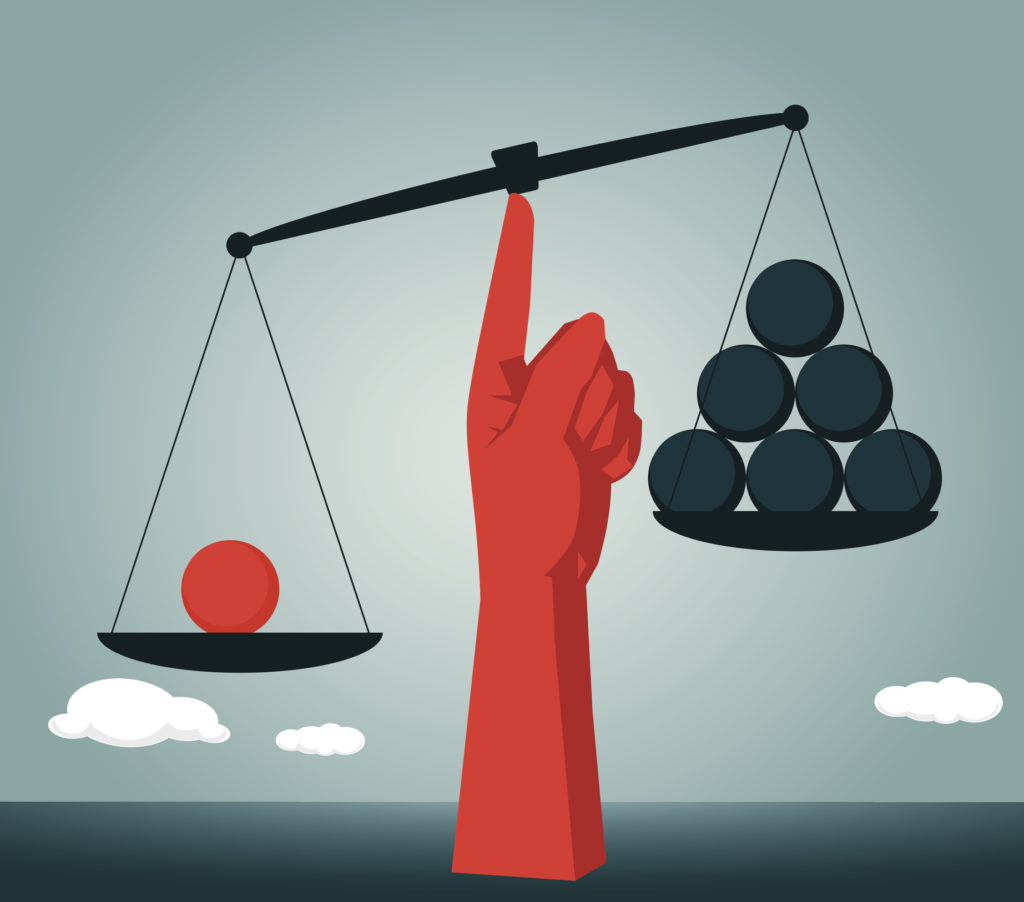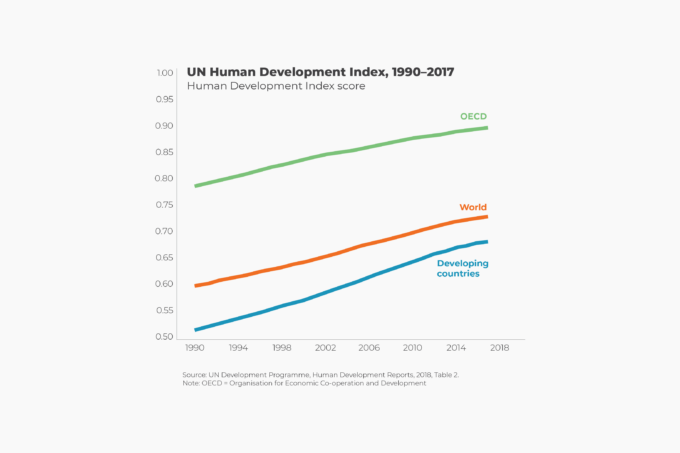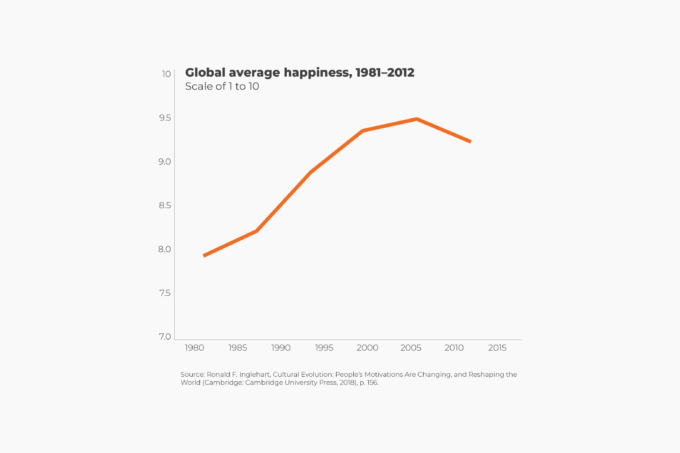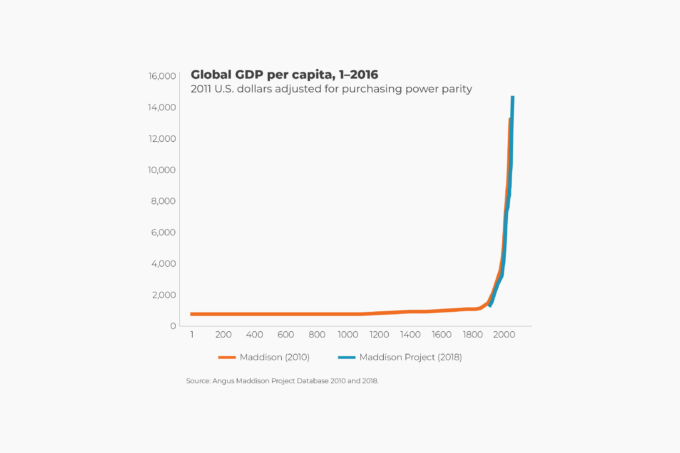Inequality is the handmaiden of progress, explains Princeton University economist Angus Deaton in his book The Great Escape: Health, Wealth, and the Origins of Inequality. Only when some people become better-off does a higher standard of living for the many become imaginable. That is precisely what happened during the Industrial Revolution, when a pronounced income gap started to emerge between the countries of Western Europe and North America on the one hand and the rest of the world on the other hand. In recent decades, however, global inequality has started to decline— primarily due to faster growth in non-Western countries.
The most commonly used indicator of income inequality is the Gini coefficient, which measures income inequality on a scale of 0 (i.e., all incomes are equal) to 1 (i.e., one person has all the income). One way to measure global income inequality, explains Branko Milanovic from City University of New York, is to calculate a population weighted average of Gini values for all individual countries. Data show that global income inequality started to decline in the 1980s, coterminous with a period of greater economic freedom and interconnectedness known as “globalization.”
That measure of income inequality— let’s call it “inequality between countries”—is somewhat misleading, however, for it ignores the fact that some income inequality is also found within any given country. As a result, some of the inequality across the world will not be counted by this measure. To get a sense of “inequality across the human race,” income inequality between countries has to be adjusted by income “inequality within countries.” On that measure, global income inequality begins to decline somewhat later—after the beginning of the new millennium.
Still, both measures of global income inequality show a downward trend. As such, concludes Milanovic, we are seeing “the first decline in inequality between world citizens since the Industrial Revolution.”








